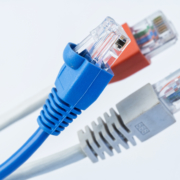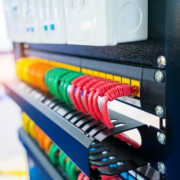CAT6 Vs Cat7 Cabling
When choosing between Cat6 vs Cat7 cabling, the first consideration should be what outcome are you trying to achieve?
Secondly, what technology does the cabling will need to support?
The third consideration should be future expansion expectations – what will your transmission and cabling requirements be in the future?
The fourth consideration is what is possible in your present building situation?
Cat7 cabling is much larger and requires additional containment or space to install. In some instances, it may not be possible to install Cat7 cabling. Therefore, when considering Cat6 vs Cat7 cabling, there are a few areas you should think about to decide which is the best solution for you.
What is data cabling used for?
Data cabling is used in a variety of settings in order to connect various devices together. It is commonly used in computer networks, home theatre systems, and other similar applications. There are a number of different types of data cables available on the market, with each type suited for different purposes. Cat6 and Cat7 cables are two of the most common types of data cables used today.
Category 6 cables are the newer standard and offer improved performance over Cat5e cables. Cat6 cables are fully compatible with Cat5e devices and can be used in their place. Cat6a cables are even higher quality, but they are not compatible with Cat5e or Cat6 equipment. Cat7 cables are the newest and highest quality data cables available. Cat7 cables are not compatible with any equipment that is not explicitly designed for Cat7 use.
How Does Data Cabling Work?
Data cabling is a system that is used to transmit data from one device to another. There are different types of data cabling, but they all use twisted copper cores to help reduce interference. The cores are surrounded by a plastic sheath, and are twisted in pairs throughout the length of the cable. This helps to ensure that the data is transmitted clearly and without errors.
Data cabling works by transmitting signals across cores in a cable. The diameter of the cores can vary. As the categories increase, the cores become tighter twisted and have varying levels of separation to help further separate the signals. Signals are sent across all 8 cores in both directions. Each category of cable is certified to a certain standard for how much bandwidth the cable can accommodate.
For Cat6 vs Cat7 cables, there will be a difference in the cables, but they will both be certified to the same 90m link length. Cat6 and Cat7 cabling are used for different purposes and networks, so it is important to know which one is right for your needs.
Cat6 cabling is typically used for Ethernet networks, while Cat7 cabling is often used in data centres or other high-bandwidth environments. When it comes to Cat6 vs Cat7 cabling, it is important to know which one will meet your needs and requirements.
CAT6 Vs Cat7 Comparison Chart
Cat6 vs Cat7 Summary
Cat6 and Cat7 cables both have their own advantages and disadvantages. Cat6 cables are typically more expensive than Cat5e or Cat5 cables, but they offer improved performance. Cat7 cables are even more expensive, but they offer the best performance possible. Cat6 and Cat7 cables both have their own applications and it is important to choose the right type of cable for your needs. Cat6 cables are typically used in applications where high speeds are needed, such as gigabit Ethernet or 10-gigabit Ethernet.






